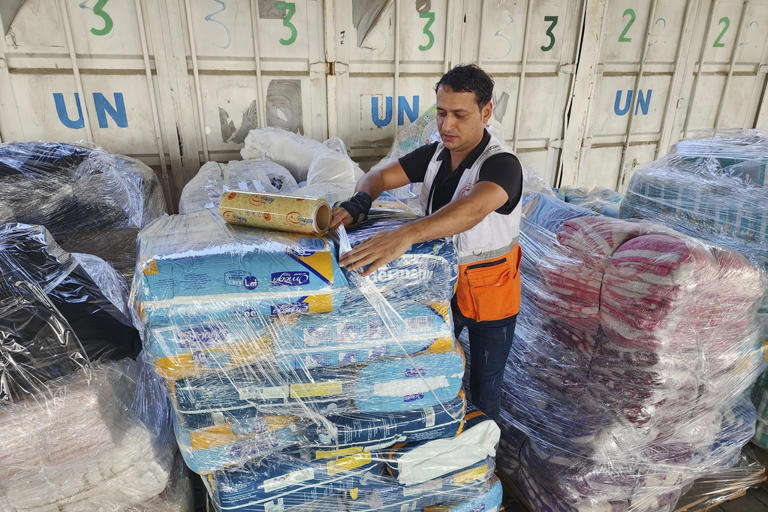“Surge in Aid to Gaza Brings Relief, But Challenges Persist for Effective Distribution”
Aid is pouring into Gaza under the ceasefire, offering a much-needed lifeline to a region devastated by war. For the first time in months, Palestinians in Gaza are receiving substantial humanitarian support, but challenges remain in ensuring that the aid reaches everyone in need. With hunger, mass displacement, and destruction affecting millions, the situation remains tense, and there’s a constant fear that the ceasefire could collapse.
As part of the ceasefire agreement, Israel has increased aid shipments to Gaza, allowing up to 600 trucks of supplies to enter the region each day. Since the ceasefire began, more than 4,200 trucks have been delivered to Gaza each week, bringing crucial food, medical supplies, and shelter materials to the population. The World Food Program has reported that during the first four days of the ceasefire, they provided more food than during any entire month of the ongoing war, with over 32,000 metric tons entering Gaza in that time.
Despite the surge in aid, distribution remains a complicated process. The infrastructure in Gaza is severely damaged, and many roads are impassable. Even when trucks reach the territory, there are constant delays caused by Israeli inspections and the looming threat of unexploded ordnance. Aid workers report that some items are still being restricted, especially those deemed “dual-use,” which could potentially be diverted for military purposes.
In areas like Jabaliya, where entire neighborhoods have been destroyed, local residents are receiving much-needed food. Samir Abu Holi, a 68-year-old man in northern Gaza, has witnessed a small but significant shift in his ability to provide for his large family. He noted that before the ceasefire, getting food for his children was incredibly difficult. But now, there is some relief, and for many others like him, this moment of reprieve offers hope.
The opening of multiple crossings has made a significant difference in the flow of aid. The Israeli military body responsible for facilitating aid has also streamlined the process, allowing quicker approvals and the operation of two crossings in the northern part of Gaza, where the need is greatest. In addition, Hamas forces have helped restore order in some areas, which has reduced looting and allowed aid agencies to operate more safely.
However, aid agencies continue to face obstacles. Some key items, such as medical supplies and equipment needed to rebuild infrastructure, still face delays due to the stringent inspection process. Fuel shortages are still affecting essential services, including hospitals and desalination plants, and Hamas has accused Israel of obstructing certain shipments of medical equipment. Furthermore, certain supplies, such as tents and building materials, require pre-approval from Israel before they can be delivered.
The situation on the ground is also exacerbated by dangerous unexploded ordnance. The war left a trail of undetonated bombs and landmines that continue to pose a risk to civilians and aid workers. In the absence of a fully functioning infrastructure, many families are being forced to live in open spaces with limited access to clean water, making them vulnerable to disease outbreaks.
Despite these challenges, aid workers are determined to continue their efforts. Organizations like UNICEF are on the ground, providing essential care to families, especially children who have suffered the most. Jonathan Crickx, a UNICEF official, shared the heartbreaking sight of thousands of families walking through southern Gaza with nothing but the clothes on their backs. For many, this is the harsh reality of a war-torn region where survival depends on aid that is still struggling to reach everyone in need.
Though aid has made significant progress, the road ahead remains fraught with challenges. The focus must remain on overcoming the logistical hurdles, addressing the political obstacles, and ensuring that aid reaches those most in need. The possibility of further fighting looms, and as the ceasefire enters its critical phase, the future of Gaza remains uncertain, with much still at stake.

